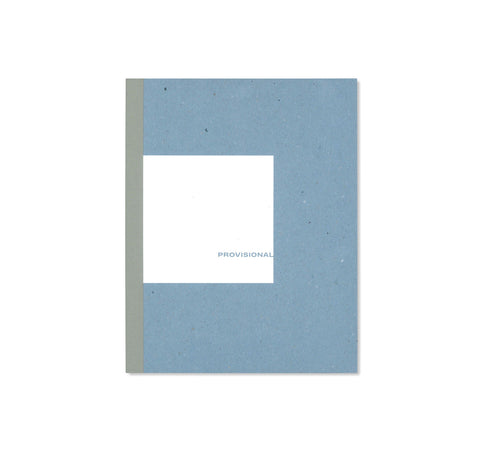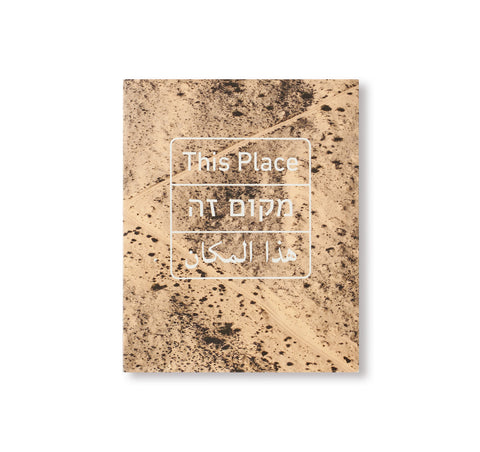AFTER by Martin Kollar [SIGNED]
スロバキア人フォトグラファー、マーティン・コラー(Martin Kollar)の作品集。妻マリアの死を受けて制作された一冊。自分の世界が破壊された出来事の後、日々時間だけが過ぎていく中で、作者は過去の作品を恐る恐る見返していった。ロケ地を求めて、あるいは撮影のために2人で行った旅先で撮った写真は、マリアと過ごした日々、月、年に作者を引き戻した。死に至るまでの2年間に、2人は一緒に制作する予定だった映画「Chronicle」の準備と撮影のために、様々な研究所や公共機関を訪れていた。
こうした過去への旅は段階的なものだったという。彼女が亡くなった直後はアーカイブを開くことさえできなかった作者だが、次の段階では一転して、マリアと一緒に過ごした時間を切り取った写真を狂ったように見続けた。そうするうちに、これらの写真の中にこれまで気がつかなかった隠された背景やつながりが見えてきたという。こうした手がかりを集め始めた作者だが、2人の人生を再構築しようとしていたわけではない。事件の前の日々が、どのようにして事件の後の日々に移り変わっていったのか。いつか起きると思っていたことがついに現実のものになった時、我々はどうしてこうも心をかき乱されるのか。そのようなことを表現しようとしていたのである。
「痛切でありながら現実離れした悲しい詩…破滅の瞬間という共通の経験を乗り越えようとしている人は、この作品が表現している永遠とその欠如、変化、運命を分ける瞬間についての考察に心を打たれるだろう」– Aesthetica
「世界はその意味を問いかける者に答えてくれるが、欲しい言葉をいつもくれるわけではない。腹を殴られたような気分になるが、今年一番の傑作である」– Il Foglio
「2019年8月31日…その瞬間から、私の世界の見方は一変した。何もかもが変わってしまった。マリアの早すぎる死、自らの命を絶つという決断は、私にはっきりと傷を残した。そしてそれは、あの出来事を境に世界が変わってしまったことを私に思い知らせ続けている」– マーティン・コラー
“31st August 2019 … from that moment on, the way I look at the world has changed. Everything has changed. Maria’s untimely death, her decision to end her own life, has made a distinct cut, a sharp delineation of the before and after.” - Martin Kollar
After was formed in the wake of the death of Martin Kollar’s partner, Maria.
As time slowly went by after the cataclysmic event, Kollar cautiously started to browse through his photographic archive. He was returned to the years, months, and days they spent together by the scores of materials from trips they made to location-scout and film together. In their last two years together, they had visited various research centres and public institutes as they started to prepare and shoot 'Chronicle', the film they were to make together.
These excursions into the past happened in various stages, from Kollar’s original inability to bring himself to open the archive, through to periods of obsession during which he was unable to stop browsing through the multitude of photographs of his and Maria’s past life. What gradually started to emerge from the pictures were hidden contexts and threads he had not seen before.
Kollar started to assemble them, but not with the aim of reconstructing their life. Instead, he sought to express how the before transcends into the after; how the most anticipated events always find you unprepared.
![AFTER by Martin Kollar [SIGNED]](http://twelve-books.com/cdn/shop/products/00_dc6640c6-517d-446c-aacd-53bf0631f979.jpg?v=1643782771)
![AFTER by Martin Kollar [SIGNED]](http://twelve-books.com/cdn/shop/products/1_32f54df0-aff5-4fe5-9c49-98b3c98b6625.jpg?v=1643782771)
![AFTER by Martin Kollar [SIGNED]](http://twelve-books.com/cdn/shop/products/2_07a07cb1-177a-4cd1-874b-16c01ebfbb99.jpg?v=1643782771)
![AFTER by Martin Kollar [SIGNED]](http://twelve-books.com/cdn/shop/products/3_6112a5f1-a9b2-4d38-8281-66ed702b13ba.jpg?v=1643782771)
![AFTER by Martin Kollar [SIGNED]](http://twelve-books.com/cdn/shop/products/4_84381d55-b124-40ab-8e30-9ecc38a2a184.jpg?v=1643782771)
![AFTER by Martin Kollar [SIGNED]](http://twelve-books.com/cdn/shop/products/5_cfa5915c-8241-4c81-8517-bc0ebbddd704.jpg?v=1643782771)
![AFTER by Martin Kollar [SIGNED]](http://twelve-books.com/cdn/shop/products/6_51c10b63-9cc1-4c19-b79f-bc356e78408e.jpg?v=1643782768)
![AFTER by Martin Kollar [SIGNED]](http://twelve-books.com/cdn/shop/products/7_2482dccf-b4ee-4b63-9830-92e68ef8c9d2.jpg?v=1643782768)
![AFTER by Martin Kollar [SIGNED]](http://twelve-books.com/cdn/shop/products/8_340e62d8-0427-46fd-a676-ed8ea803e03d.jpg?v=1643782768)
![AFTER by Martin Kollar [SIGNED]](http://twelve-books.com/cdn/shop/products/9_15c65811-fd0d-4ba7-8641-6673d99580ef.jpg?v=1643782768)
![AFTER by Martin Kollar [SIGNED]](http://twelve-books.com/cdn/shop/products/10_2a35fa39-b344-4914-8de9-45ba81778636.jpg?v=1643782768)
![AFTER by Martin Kollar [SIGNED]](http://twelve-books.com/cdn/shop/products/11_ed54243f-dae6-4fd5-a8e2-6940a95e1666.jpg?v=1643782768)
![AFTER by Martin Kollar [SIGNED]](http://twelve-books.com/cdn/shop/products/12_adf83313-5b1a-4278-9e31-4bf5c02d349d.jpg?v=1643782768)
![AFTER by Martin Kollar [SIGNED]](http://twelve-books.com/cdn/shop/products/13_b62eb932-939c-4485-bc1e-cd4ce6601c43.jpg?v=1643782768)
![AFTER by Martin Kollar [SIGNED]](http://twelve-books.com/cdn/shop/products/14_4e5a8052-e57e-4664-b678-0e0ed808babb.jpg?v=1643782768)
![AFTER by Martin Kollar [SIGNED]](http://twelve-books.com/cdn/shop/products/15_47a7a6f1-ebf4-4f57-a513-ace92f34c419.jpg?v=1643782768)
![AFTER by Martin Kollar [SIGNED]](http://twelve-books.com/cdn/shop/products/16_f491f881-7674-4138-9e3f-57190a0615fa.jpg?v=1643782768)
![AFTER by Martin Kollar [SIGNED]](http://twelve-books.com/cdn/shop/products/17_9e7d05a8-9daa-4ee1-8a1f-16af58d19a2e.jpg?v=1643782768)
![AFTER by Martin Kollar [SIGNED]](http://twelve-books.com/cdn/shop/products/18_c6a3c879-9b8f-4459-972d-f7c1cc086b92.jpg?v=1643782768)
![AFTER by Martin Kollar [SIGNED]](http://twelve-books.com/cdn/shop/products/19_4b6315ba-94ff-43b3-bd24-8991e2b7fde9.jpg?v=1643782768)
![AFTER by Martin Kollar [SIGNED]](http://twelve-books.com/cdn/shop/products/20_97dd3fa3-8e9d-4fb3-bfa6-444d338240aa.jpg?v=1643782768)
![AFTER by Martin Kollar [SIGNED]](http://twelve-books.com/cdn/shop/products/21_3c6d9583-b8a0-4097-94df-c1f9ca8414a1.jpg?v=1643782768)
![AFTER by Martin Kollar [SIGNED]](http://twelve-books.com/cdn/shop/products/22_40a5c0bb-8a7a-4c21-881e-eb434e147c25.jpg?v=1643782768)
![AFTER by Martin Kollar [SIGNED]](http://twelve-books.com/cdn/shop/products/23_1155c230-a12d-485e-8103-5b6eb85f09e7.jpg?v=1643782962)


